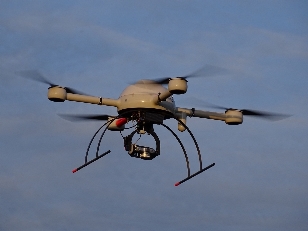The use of small Unmanned Aircraft Systems (UAS; also known as "drones") for professional and personal-leisure use is increasing enormously. UAS operate at low altitudes (<500 m) and in any terrain, thus they are susceptible to interact with local fauna, generating a new type of anthropogenic disturbance that has not been systematically evaluated. This review address this gap gathering the existent literature about animals' responses to UAS flights and a pooled analysis of the data was conducted to determine the probability and intensity of the disturbance and to identify the factors influencing animals' reactions towards the small aircraft. Wildlife reactions depended on both the UAS attributes (flight pattern, engine type and size of aircraft) and the characteristics of animals themselves (type of animal, life-history stage and level of aggregation). Target-oriented flight patterns, larger UAS sizes, and fuel-powered (noisier) engines evoked the strongest reactions in wildlife. Animals during the non-breeding period and in large groups were more likely to show behavioral reactions to UAS, and birds are more prone to react than other taxa. The implications of these results are discussed in the context of wildlife disturbance and guidelines for conservationists, users and manufacturers are suggested to minimize the impact of UAS. In addition, researchers propose that the legal framework needs to be adapted so that appropriate actions can be undertaken when wildlife is negatively affected by these emergent practices. información[at]ebd.csic.es: Mulero-Pázmány et al (2017) Unmanned aircraft systems as a new source of disturbance for wildlife: A systematic review. PLoS ONE 12(6): e0178448. Doi 10.1371/journal.pone.0178448
http://journals.plos.org/plosone/article?id=10.1371/journal.pone.0178448

 Las altas temperaturas están provocando que las lagunas y las marismas de Doñana pierdan agua rápidamente
Las altas temperaturas están provocando que las lagunas y las marismas de Doñana pierdan agua rápidamente




